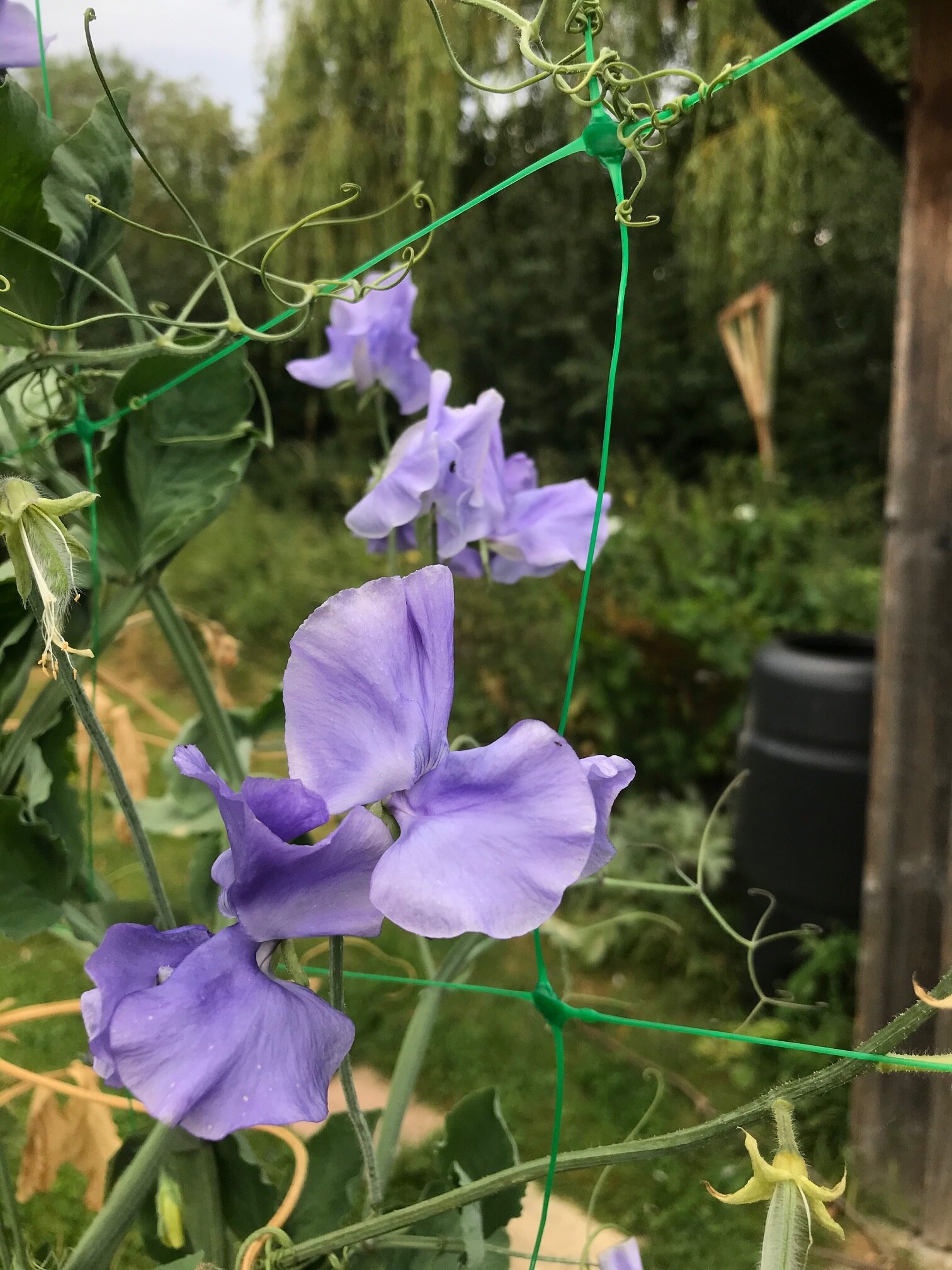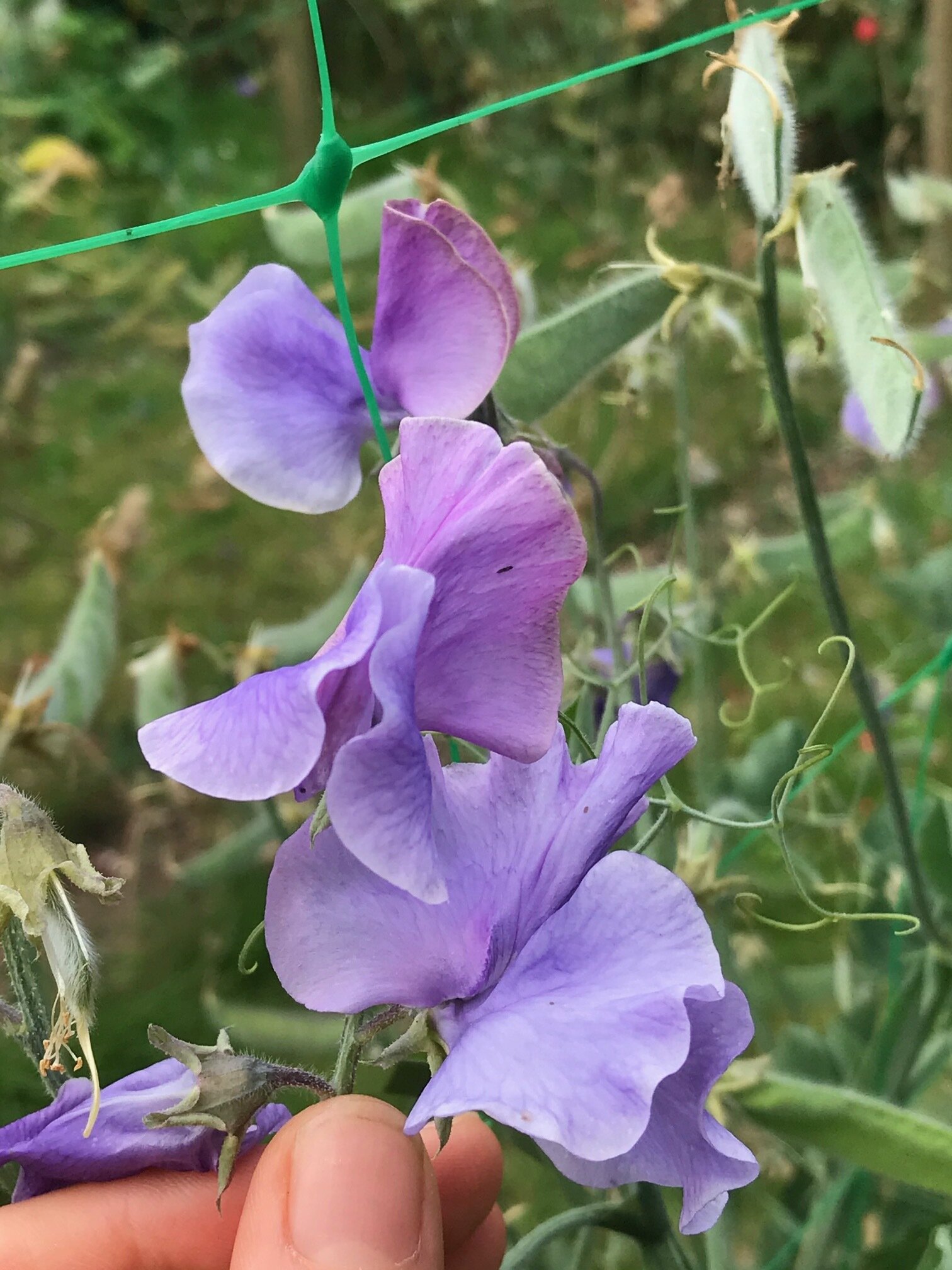It’s been a long while since I’ve posted an update, and now in this time of crisis and solidarity I feel particularly strongly to reach out to everyone who supports Owl’s Acre Seeds, as a customer or simply as an admirer of the beautiful sweet pea and all the plant seeds we offer. I would like to reasure anybody ordering at the moment that we are observing strict hygeine procedures when handling and packing seed - it’s pretty much a single person process from receiving an order to getting it in the post. For now we are fit and well and open for business but should that change I will post news and information on a banner on our home page. My thoughts are with those may of us whose lives and livelihoods are becoming more unstable and uncertain, and I pray that you all have good communities around you and company in times of loneliness and fear.
I am posting a picture of some late sown sweet peas that are just beginning to open their first leaves…they have been holding them tightly closed for a couple of weeks and finally a change in temperature, or maybe the lengthening days, is coaxing them to emerge. These plants will all be for friends and growing experiments…I’m not even sure what varieties are in there now, a surprise mixture! Needless to say I am nourishing myself with time outside, weeding various gardens and getting plants in for the warmer season to come. Regardless of what is consuming us in the human world, Spring is faithfully unfolding around us and it gives me deep solace to hear the birds singing their joyful songs and to watch the wild weeds filling the hedgerows again. There is wonderful medicine for the soul here, and I wish you all the grounding, peaceful happiness of a garden well tended and seeds lovingly sown for a bright time ahead.






















